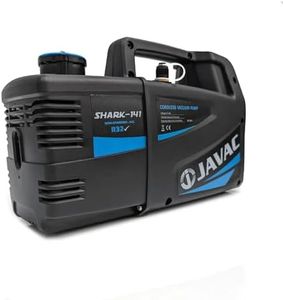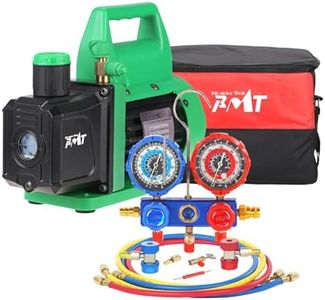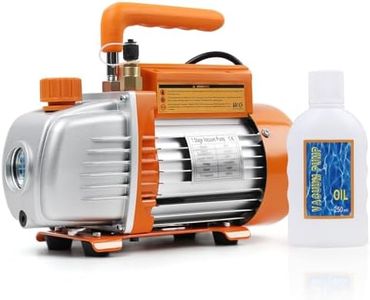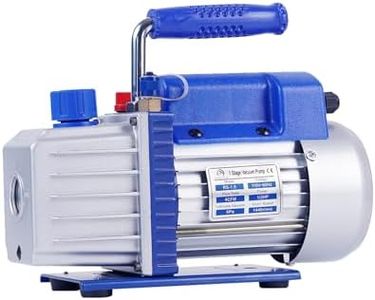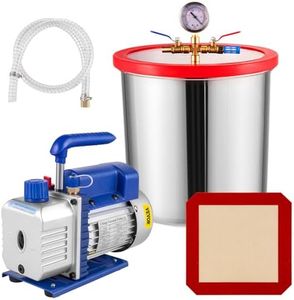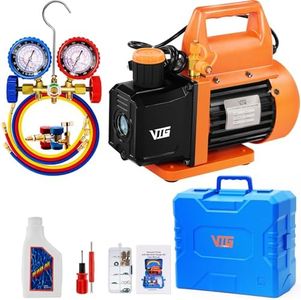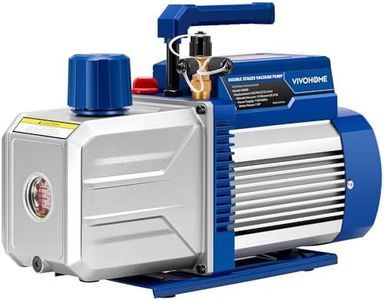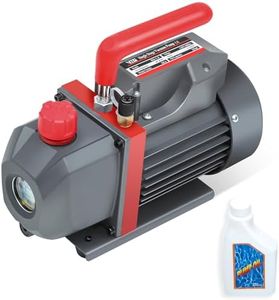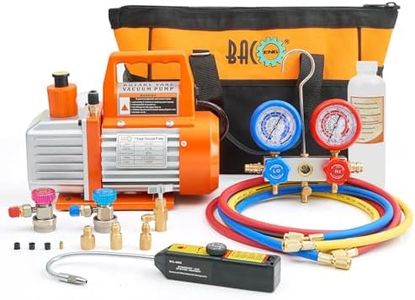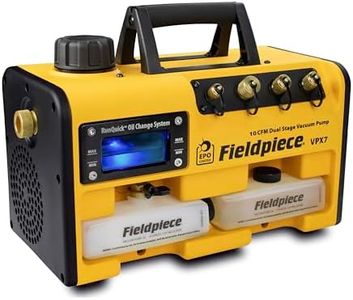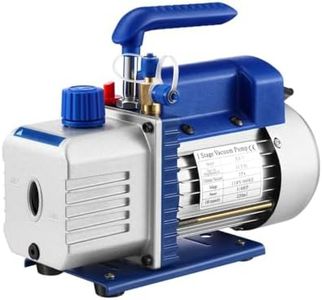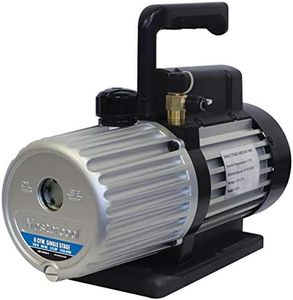We Use CookiesWe use cookies to enhance the security, performance,
functionality and for analytical and promotional activities. By continuing to browse this site you
are agreeing to our privacy policy
10 Best Automobile Ac Vacuum Pump
From leading brands and best sellers available on the web.Buying Guide for the Best Automobile Ac Vacuum Pump
Selecting an automobile AC vacuum pump is important for anyone working with vehicle air conditioning systems, such as for recharging refrigerant or conducting repairs. The right vacuum pump will help you remove air and moisture from the AC system effectively, ensuring optimal performance and preventing potential damage. Your choice should depend on how often you'll use the pump, what kinds of vehicles you’ll be working on, and whether you need additional features for convenience. Understanding the key specifications will help you make a smart decision based on your intended use, whether it's for occasional DIY maintenance or frequent professional repairs.CFM (Cubic Feet per Minute) or Airflow RateCFM stands for cubic feet per minute and measures how much air the vacuum pump can remove from the AC system in a minute. This is a crucial spec because higher CFM pumps can evacuate systems faster, saving you time on larger jobs. Values typically range from around 1 to 5 CFM. For smaller or less frequent tasks, 1–2 CFM might be enough, making the pump lighter and more portable. For larger systems or professional use, higher CFM (3–5) is ideal since it speeds up the vacuuming process. Think about the size of the vehicle systems you'll work on and pick a pump that will keep the job efficient without being excessive for your needs.
Stage (Single vs. Two-Stage)This specification refers to how the pump creates a vacuum. A single-stage pump has one vacuum-creating section and is sufficient for most simple AC work, creating a reasonable vacuum at a lower cost and with less maintenance. Two-stage pumps, on the other hand, have two sections working in sequence, which allows them to create a deeper vacuum and remove moisture more effectively. If you’re a casual user servicing only personal vehicles, a single-stage pump is usually fine. But if you need to work on high-performance or larger systems, or want the most thorough air and moisture removal, a two-stage pump is a better fit.
Ultimate Vacuum (Micron Rating)The ultimate vacuum or micron rating tells you how deep a vacuum the pump can achieve, measured in microns. A lower micron value means better air and moisture removal, which is crucial for preventing contamination and ensuring the AC system runs smoothly. Common values range from 75 to below 20 microns. For general AC work, a pump that reaches 75–100 microns is usually sufficient. For critical or professional jobs where maximum moisture removal matters, look for a pump rated for 20 microns or less. Choose according to how stringent you want to be with system cleanliness and performance.
Motor Power and VoltageMotor power (measured in horsepower or watts) and voltage determine how strong and fast the pump operates, and whether it’s compatible with your power source. Lower-powered pumps are suitable for light, occasional use, while higher-powered units are more robust for continuous or professional operation. Standard household voltage models (like 110–120V) are easy to use at home, whereas higher voltage options (220–240V) may be more stable for large shops. Consider your setup and how frequently or intensely you'll use the pump to guide your choice.
Oil Type and Reservoir CapacityMost AC vacuum pumps use oil to seal and lubricate internal parts. The oil reservoir’s size indicates how long the pump can run before needing a refill or oil change. Pumps with bigger reservoirs are more suited for long or repeated usage, while smaller reservoirs make the pump lighter but need more frequent maintenance. Ensure the pump you choose uses oil that’s easy to source and fits how much you plan to use it; opt for larger capacity if you expect to run the pump frequently or for long periods.
Weight and PortabilityWeight and design impact how easy it is to move and store the pump. Lighter, more compact models are great for DIY users or for mobile technicians who need to transport the pump between locations. Heavier, more robust units may offer more power and durability but can be cumbersome. Think about where you’ll use the pump most—if you need something portable, focus on lightweight models. If it will stay put in a garage, weight may be less important.
Noise LevelNoise level reflects how loud the pump is during operation. Quieter pumps make for a more comfortable working environment, especially for longer jobs or indoor use. Noise level is often not specified but can be a consideration if you’re sensitive to sound or working in noise-restricted areas. If you value a quieter workspace, seek pumps marketed as ‘quiet’ or look for customer feedback about noise.
